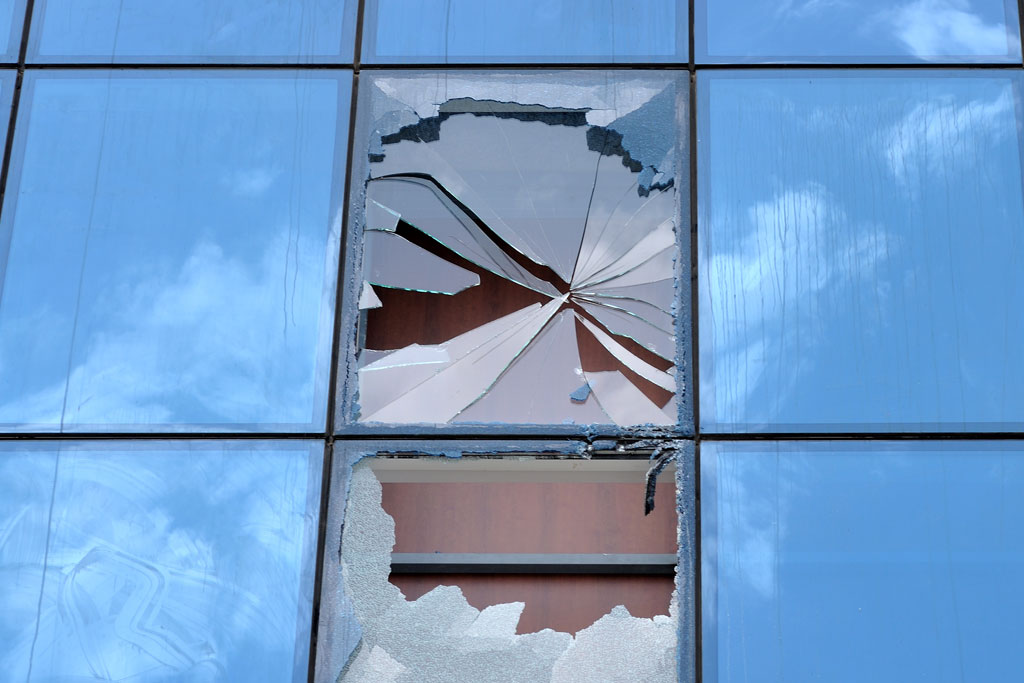The Broken Windows Theory
By Cody Clark
Before I began working in the parking department of my company, I was working in the security field. I completed a course at the Nova Scotia Community College Truro Campus for Law and Security. Within this course I learned a great deal and have applied it to the field of parking operations. One topic I would like to outline today is the Broken Windows theory. Regarding this theory in Law enforcement, the studies that I personally have seen argue that there is not enough data on the subject. There is no concrete or decisive way to attribute this theory to an actual decline in overall crime rates. In this article I will summarize the Broken Windows theory itself and describe how I believe we as employees or owners can apply this theory to the day-to-day functions of parking lots.
The Broken Windows theory in its essence is referenced directly in its name. The theory at its base is that if an area (or in our situation a parking garage/lot) looks derelict or has visible signs that crime has been committed (such as broken windows), it will inadvertently attract additional or more serious crime. To avoid this, pro-active policing of small crimes, i.e., theft, property damage and vandalism, creates an air of lawfulness, and deters such an increase. Knowing what the Broken Windows theory is, at its core, we can now apply this quite easily to our everyday operations. Ensuring all graffiti is removed or painted over and that any damaged or broken equipment is repaired in a timely manner. Doing these tasks quickly and effectively will help paint the picture that your parking garage is monitored and well maintained. A big thing that we as operators can do to enforce this model is to police fare evasion. Seeing parkers drive around barriers or “cheat a system” for a lower fee or free parking can lead not only to revenue loss but also to an increase in this behavior or similar small crimes.
An example I like to use from my own experiences dealing with individuals is public intoxication. The parkade that I work in is the closest lot to a hockey rink and oftentimes you will have intoxicated people walking through after a game. Its at these times where you can truly see the effects of the Broken Windows theory and where you need a good presence and policing in and around the lot. Not that all people who have been drinking are up to nefarious activities, but it only takes that one inebriated person to start throwing beer cans and hanging off equipment or pipes to spur on a handful of others to do the same. The proverb “If all of your friends jumped off a bridge, would you do it too?” rings quite strongly here. We have all heard of cities or towns rioting after a big Stanley cup playoffs win… or unfortunate loss. In my opinion having an employee or security presence in our lot moving along loiterers and picking up any ensuing litter has discouraged further unwanted activity. With this instance as an example on how we implement the theory, in a short-term cause and effect situation, we can now apply the same trend to other circumstances; whether they be short- or long-term situations
We can also apply this theory to not only small crime but also to our own individual parking lot regulations. For example, ensuring that reserved spaces are being used correctly, or that different monthly access levels are being adhered to. You may frequently hear something along the lines of “If that person can park there then I can as well” or “Oh I have parked here numerous times, and no one has ever given me a warning”. I believe that by following this model not only can we deter further disobedience but create an environment that is safe for clients and patrons that are using our services correctly. Creating that safe atmosphere paired with great customer service will surely enhance the experience the customers have and turn them into repeat parkers or even new monthly clients.
In the end, a lot of the everyday activities that we conduct within our parking lots are already enforcing a Broken Windows theory environment but being aware of this model may help us to improve or implement further procedures. Even the smallest items such as cracked panes of glass or the improper use of monthly cards, when left unchecked, can snowball and lead to habitual unwanted behavior in the area. Through diligence and the pro-activity of employees or security the recurrence of misbehavior can be reduced, and we can create a secure and more pleasant environment for everyone.
About the Author:
Cody Clark works in the Client Services area of Crombie REIT and was the first graduate of the Canadian Parking Association’s Parking Management Certification Program (PMC).






